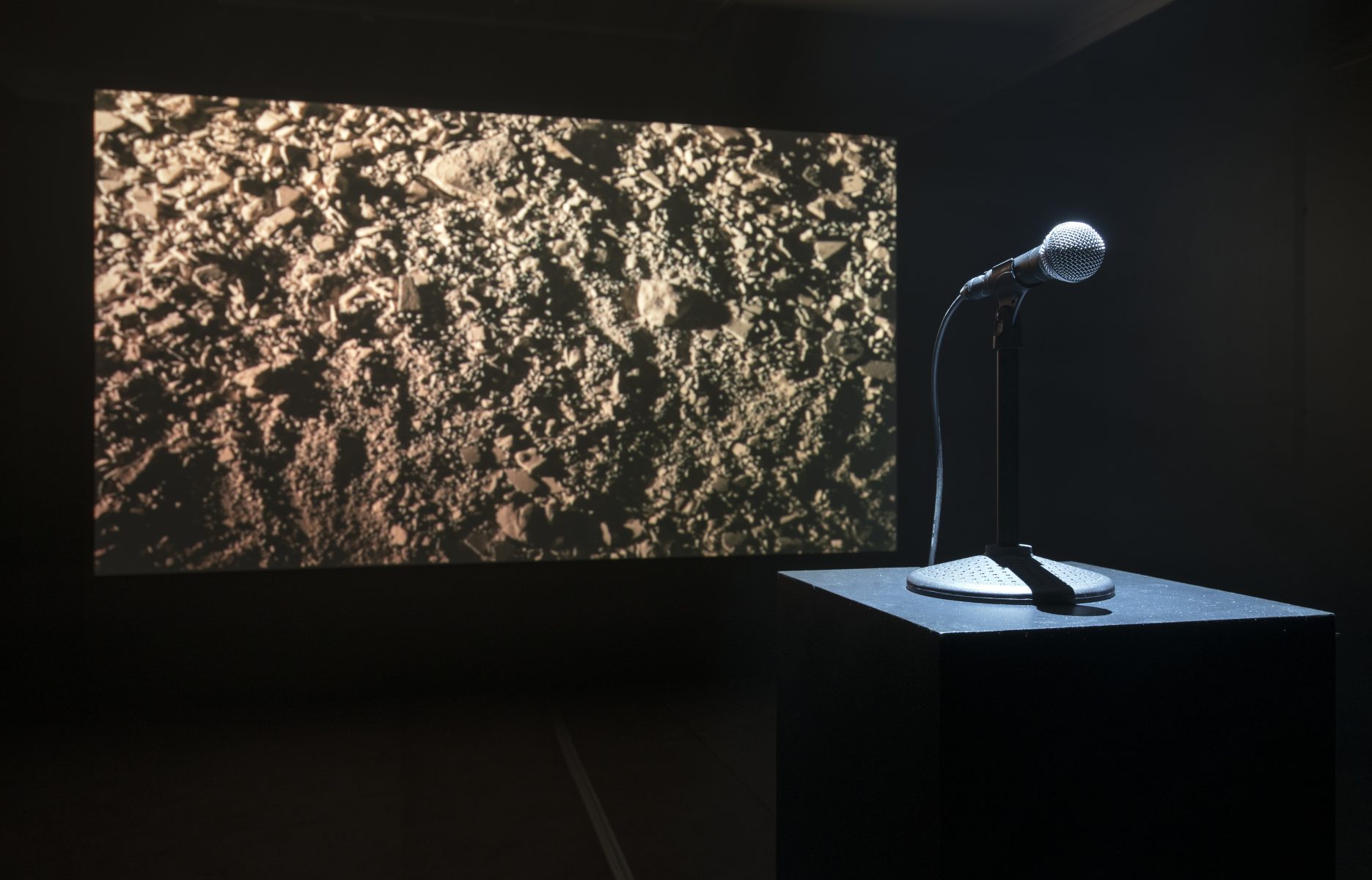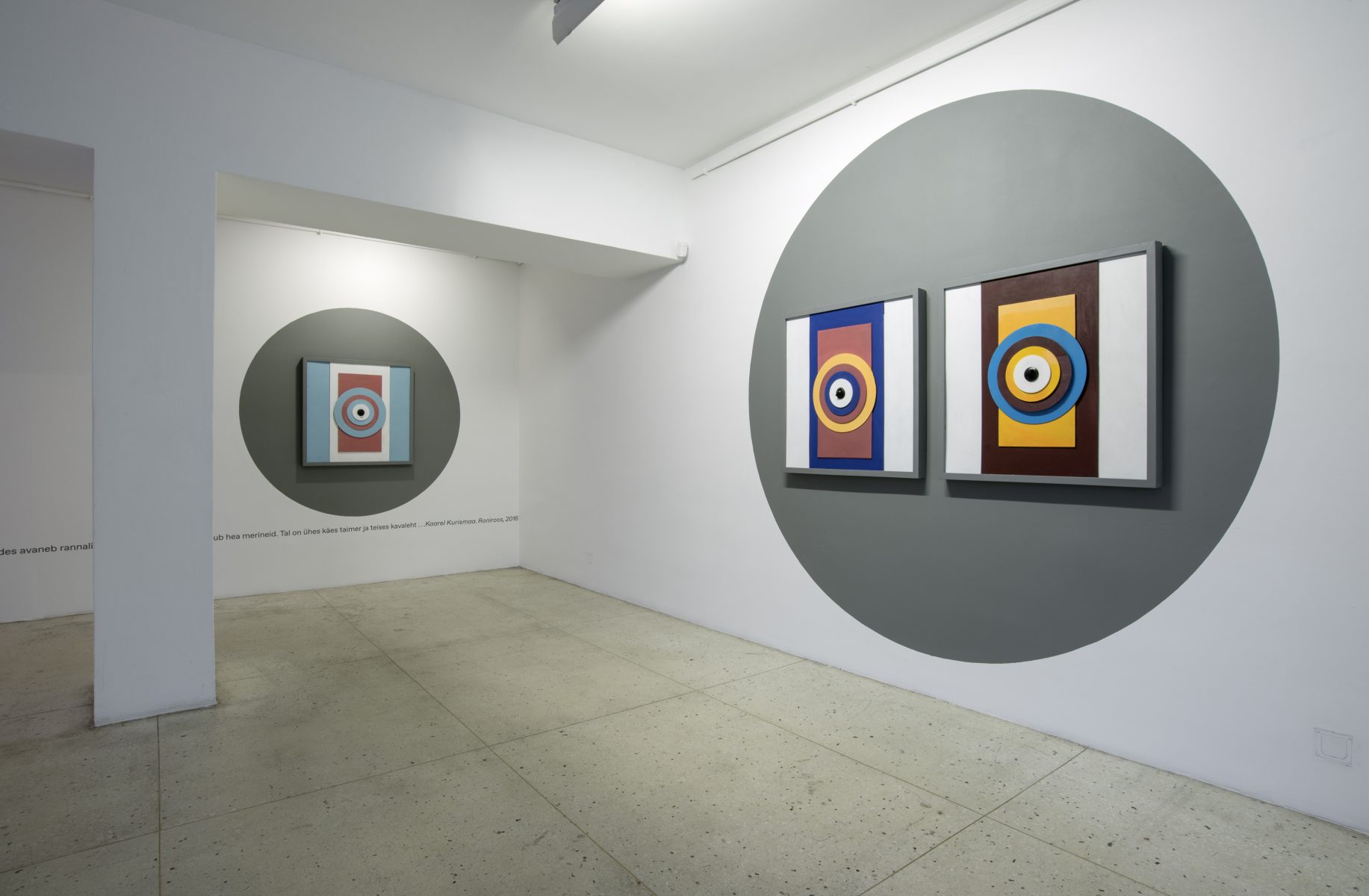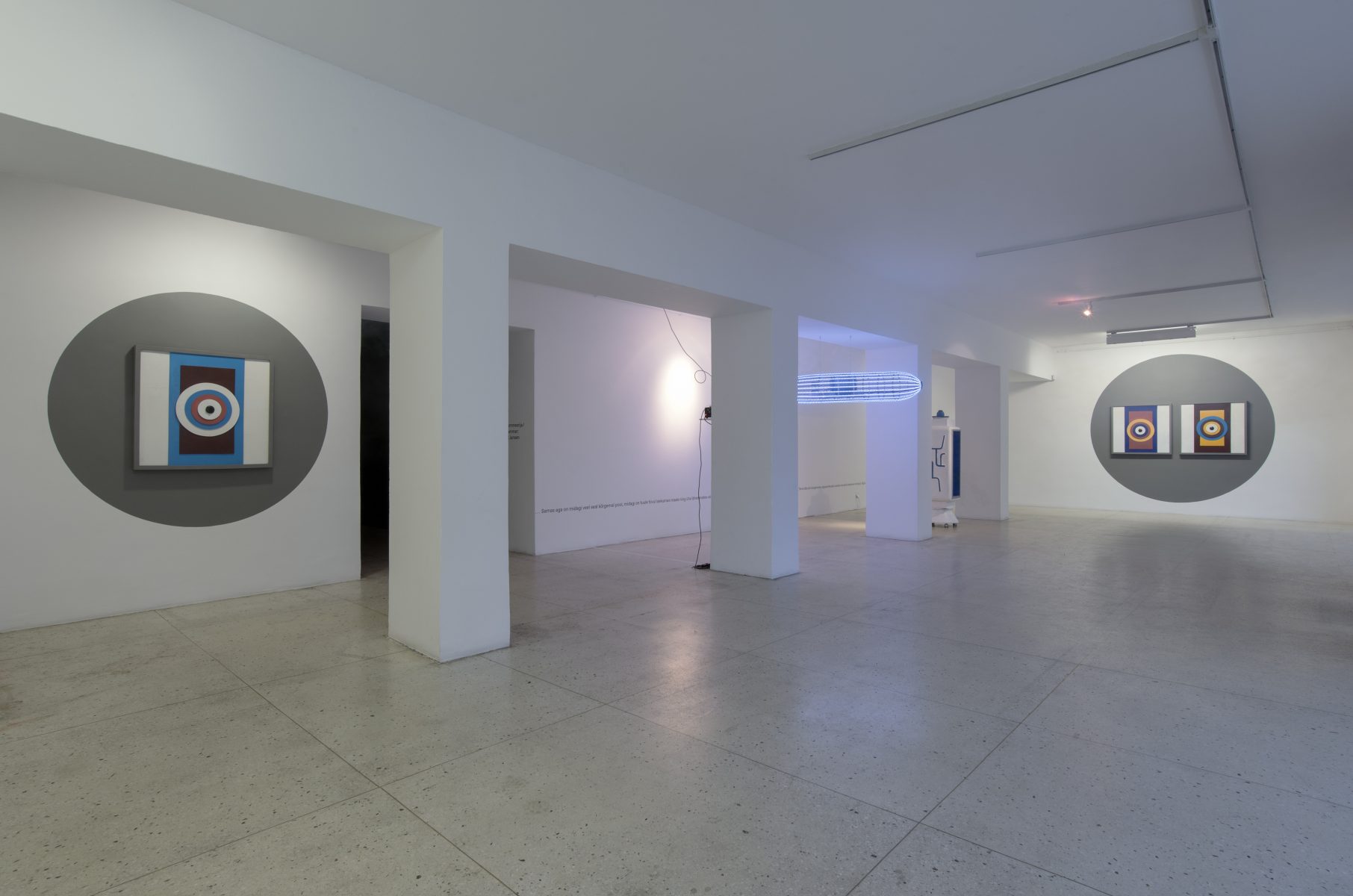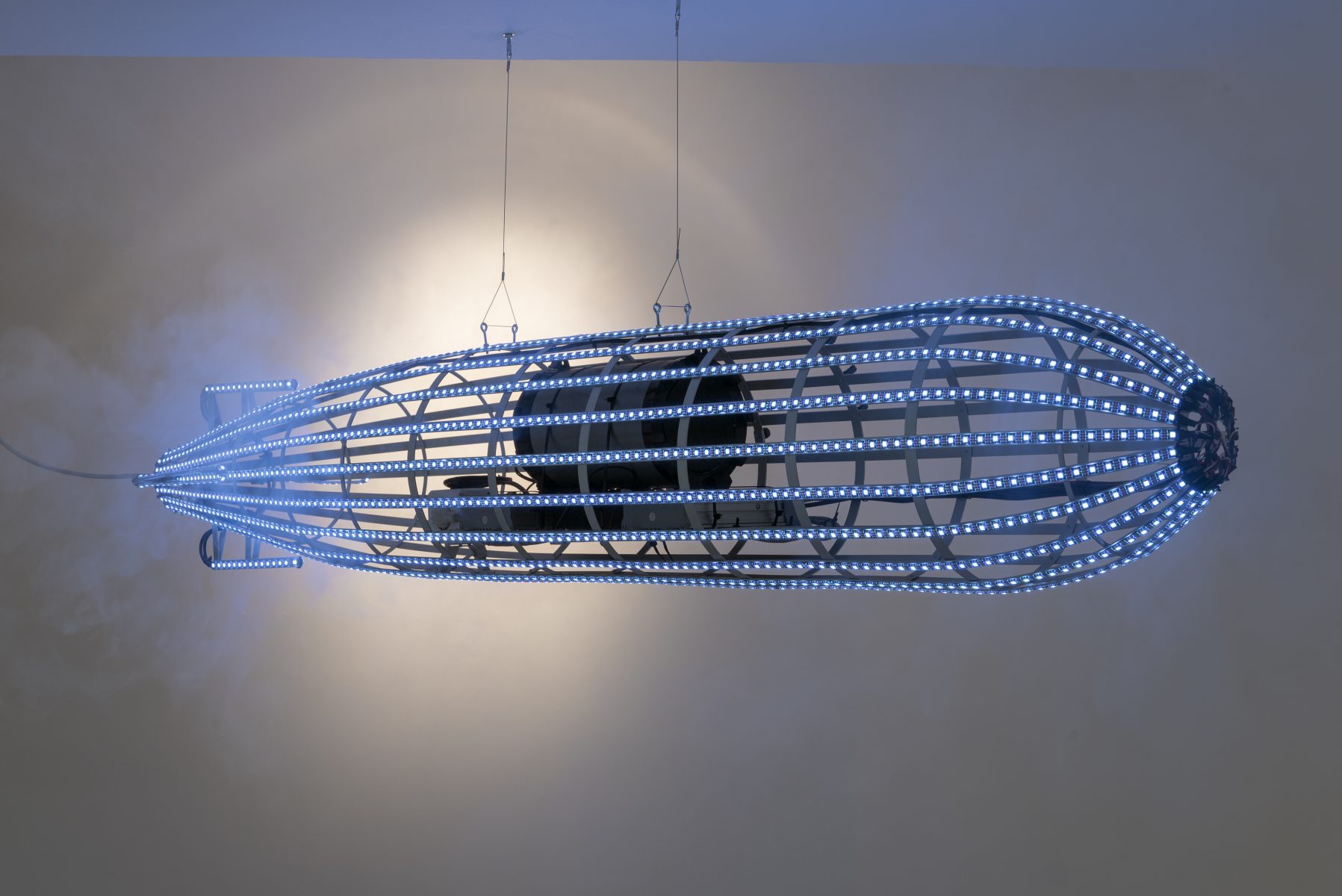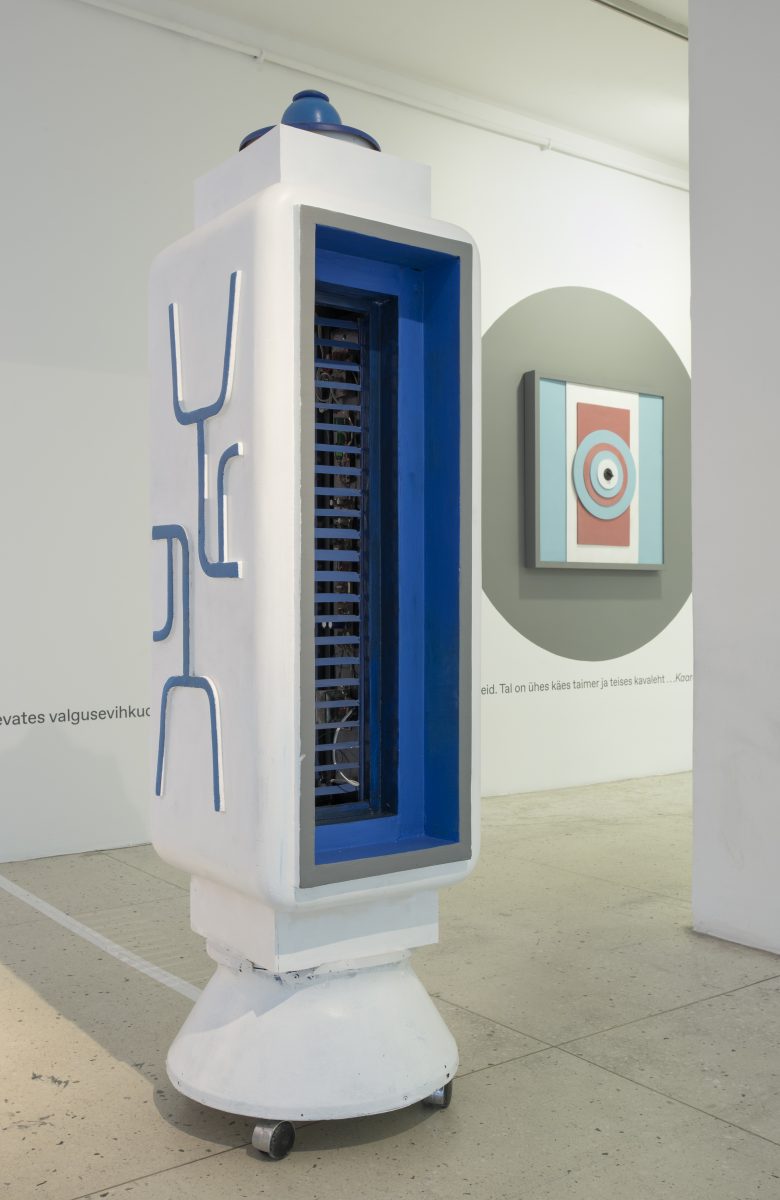TIMER
Kaarel Kurismaa, Raul Keller, Mari-Liis Rebane ja Karl Saks
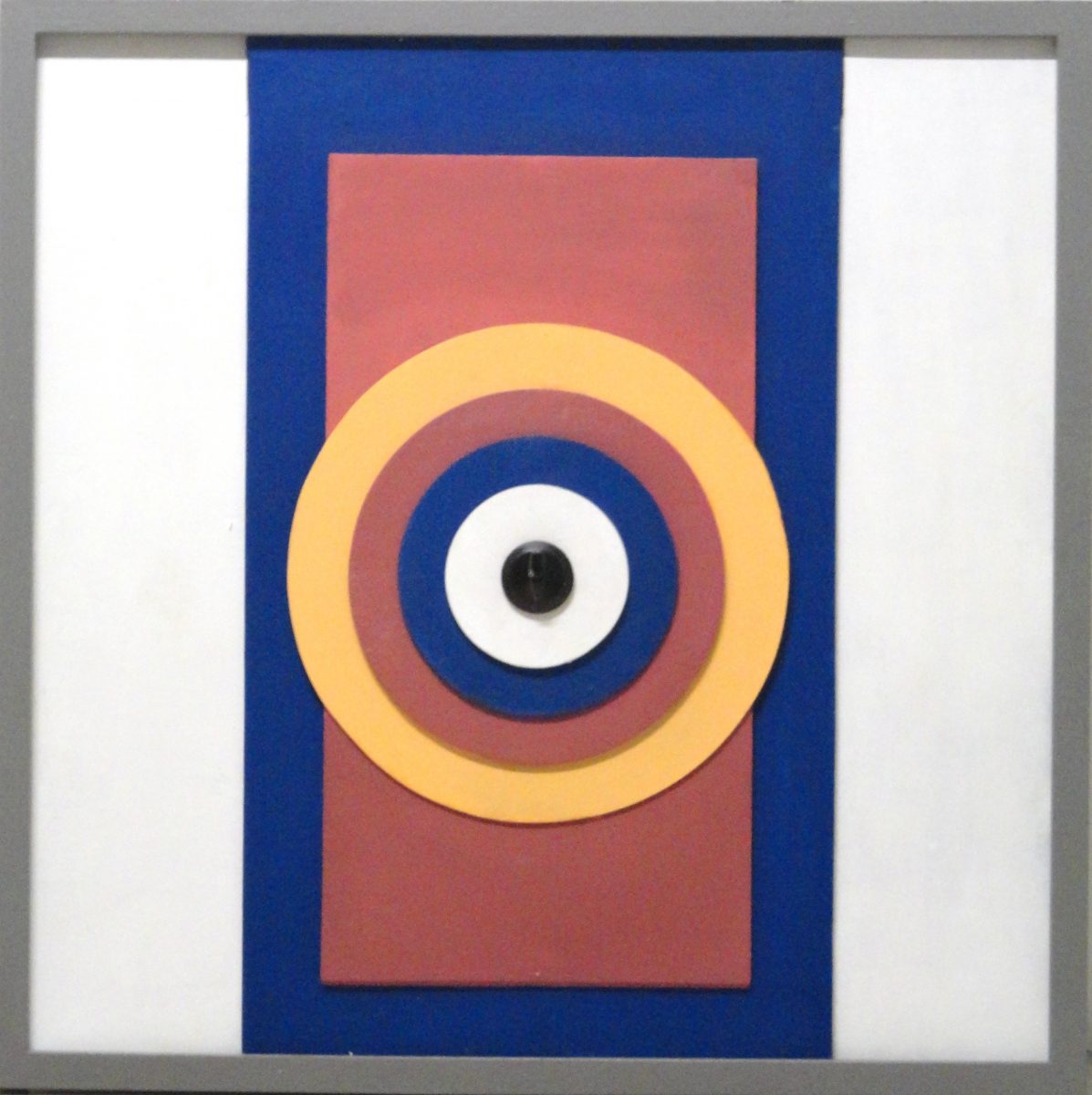
At this exhibition, there are quite a few timers that tick, hum, sing or otherwise sound the time, along with four artists of various ages that measure different temporal and spatial experiences. Not that any of them are demented by youth, or infirmed by age but none of them plays their role in society in a dignified or safe way, or by dismissing challenges.
It could be said that the precondition for the existence of all four is a maximum state of openness, self-consciously keeping themselves in the developmental stage of a student rather than a professional artist. The intensity of their feelers, the purity of emotion and thought are much greater values for them than certified knowledge. In summary the four of them, despite their age differences, have achieved quite a bit: word, sound, film, dance, installation and fine art. And they have considered and held many occupations, such as caregiver, volunteer, producer, designer, instructor and musician. This all despite the belief “… that art as we know it, is over, finished. … But why worry if you can continue and go on from here. Simply take a step out into the unknown.”… (Andres Lõo, Fantoomplatvorm. Paranoia Publishing Ltd pp 35).
Raul Keller (1973) focuses primarily on site-specific sound installations, sound performance, musical improvisation, and radiophonic experiments (Andreas Trossek). He passionately indicates the limitations of physical space compared to acoustical space (Ragne Nukk) and seems somehow large and benevolent when moving toward the light making and world-creating sound, while actually hiding in the shadows.
Mari-Liis Rebane (1988) is adept at many means of self-expression, she strives to transcend genre, style and medium, by creating post-internet art counterparts to sound. Using the third person, she says the following about her video-sound installation, which is based on the rhythm of fingering prayer beads: “The author uses the motif of counting beads as a means of concentration based initially on religious cognition, which creates a hypnotic space around itself and plays with time mythology.” She seems to be somewhat complicated; she exudes restlessness and talent.
Karl Saks (1984) is an artist who does not draw a line between the crazy world and the gestures that precisely define it. He is one of the performers on the contemporary dance stage that has the most interesting bodily expression, although he himself says that “movement doesn’t engender anything in me — no good feelings at any emotional level. The only emotional bonus of movement is that it initiates thinking, and one’s thought activity and process change when one discovers oneself moving.” He is extremely sensitive; someone that accepts responsibility and resounds only as much as the situation requires.
Kaarel Kurismaa (1939) works with immobile and mobile, silent and vocal sculptural objects. He is rightly considered to be the pioneer of Estonian kinetic and sound art. In addition, he writes short stories with dislocated evolvement that excite reader´s fantasy. His enjoyment of the quiet ticking of small machines, which somewhat shyly but persistently confirms to the world “I love you!”, unexpectedly radiate warmth and trust.
We thank: Cultural Endowment of Estonia, Ministry of Culture, Cultural Endowment of Estonia, Tallinn Department of Culture, Veinisõber, Kanuti Gildi Saal, Hello Upan, Revo Koplus, Mari Kurismaa, Taavet Jansen, Madlen Hirtentreu.



